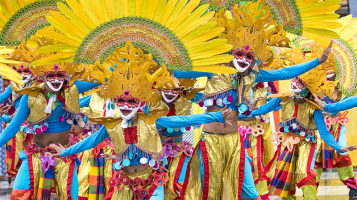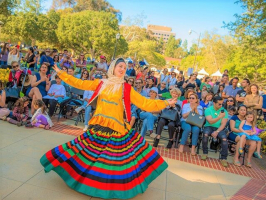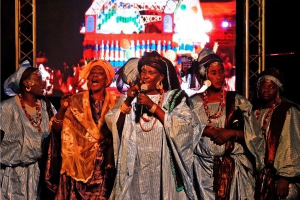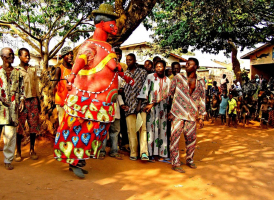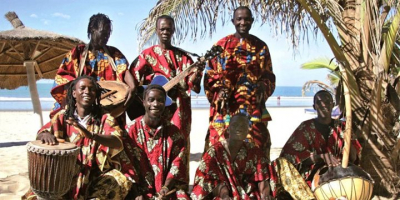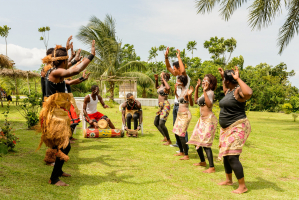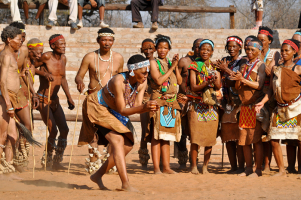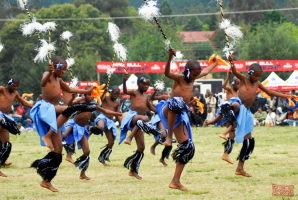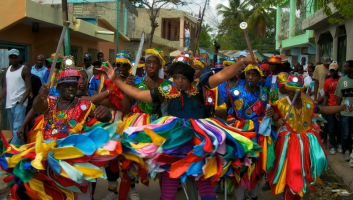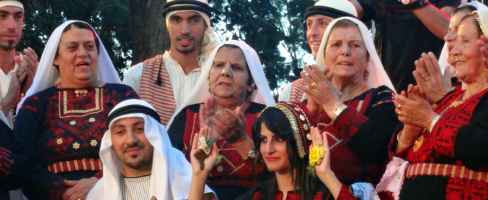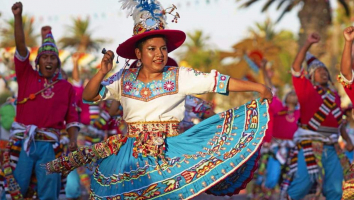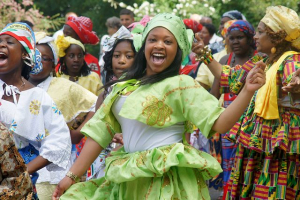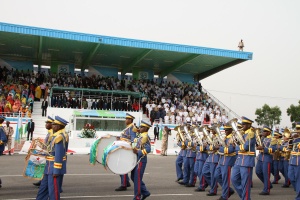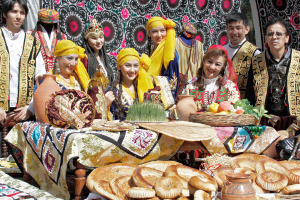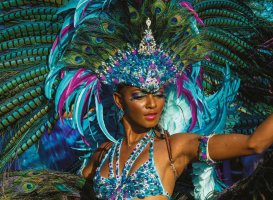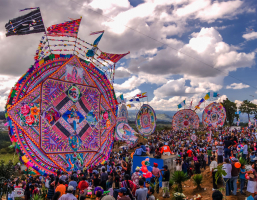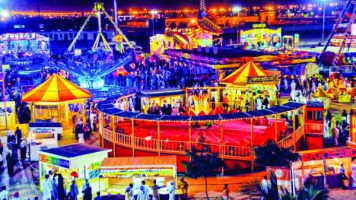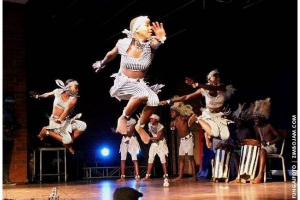Top 10 Most Famous Festivals in Ecuador
Immersing yourself in a rich cultural tradition is perhaps one of the best ways to get to know the country and its people. The famous festivals in Ecuador are ... read more...perhaps one of South America's most colorful cultural traditions. The famous festivals in Ecuador offer an insight into the history, culture, and warmth of this country that any visitor is sure to enjoy. So, if you are planning a visit or learning about Ecuador here is a list of the most popular festivals in Ecuador!
-
Semana Santa is easily one of Ecuador's most famous religious festivals, with more than 90% of the country's population being Roman Catholic. It is organized to honor the life and work of Jesus Christ. There will be week-long celebrations taking place from March to April (dates vary depending on the lunar calendar). The festival's peak is on Good Friday and Easter Sunday when crowds of locals take part in street parades, carnivals, and fairs. Traditional Ecuadorian "fanesca" (Lenten chowder) is selling like hotcakes during this time, so give it a try. Although Semana Santa is celebrated all over the country, the religious parades in the capital Quito, especially on Good Friday, are something in and of themselves.
Semana Santa - one of the country's most popular festivals, also a deep theatrical tradition, Holly Week in Ecuador brings together iconic figures in a recreating procession. Christ's journey to the cross. If you're visiting Quito during this time, make sure you catch one of the many processions and soak up the tradition, and not to be missed is the ongoing Jesus del Gran Poder procession in the History Center.
- Organization time: April every year
- Location: Quito City, Ecuador
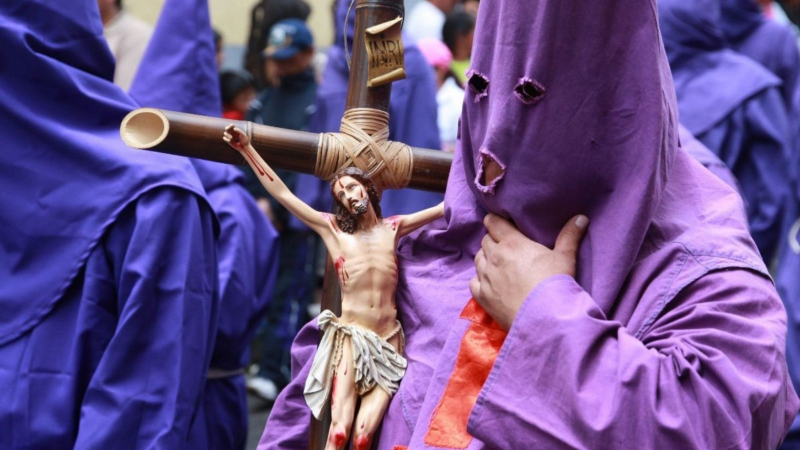
Source: adoreecuador 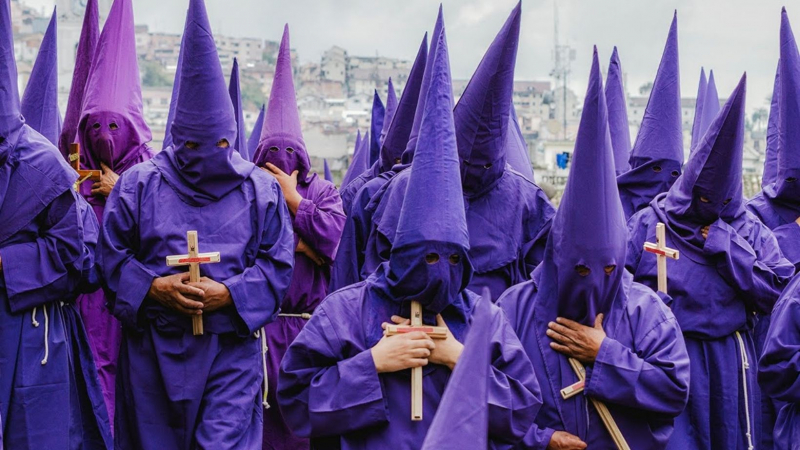
Source: witness.earth -
La Diablada de Píllaro is a celebration and also one of the famous festivals that cannot be ignored in Ecuador. The Ecuadorian city of Píllaro (near Baños) celebrates the New Year in a rather unique way by hosting La Diablada de Píllaro which runs from January 1 to January 6. The origins of this Ecuadorian festival are still unknown, but folklore connects it with indigenous uprisings over a number of centuries. During the La Diablada de Píllaro festival, locals dress up as avatars and other avatars and parade through the city's streets for vibrant and energetic performances. complete with songs and dances. While visitors can catch small shows here and there, head to Píllaro's central park for some of the best. The energy and spirit of these performers are contagious!
At the famous La Diablada de Píllaro festival, thousands of street-goers dance to celebrate, bringing together the entire town and ex-pats. The three main characters are the Devil, Guaricha, and Capariche. The beauty of the ceremony has its roots in the colonial era and evokes indigenous and mestizo rebellion against the Catholic religion. The devil's costume was a disguised rejection of the preaching of the priests, as well as the physical, economic, psychological, and moral abuse that came to the Spaniards.
- Organization time: January every year
- Location : Píllaro, Ecuador
La Diablada, Pillaro Ecuador's Devil´s Dance - La Diablada de Pillaro 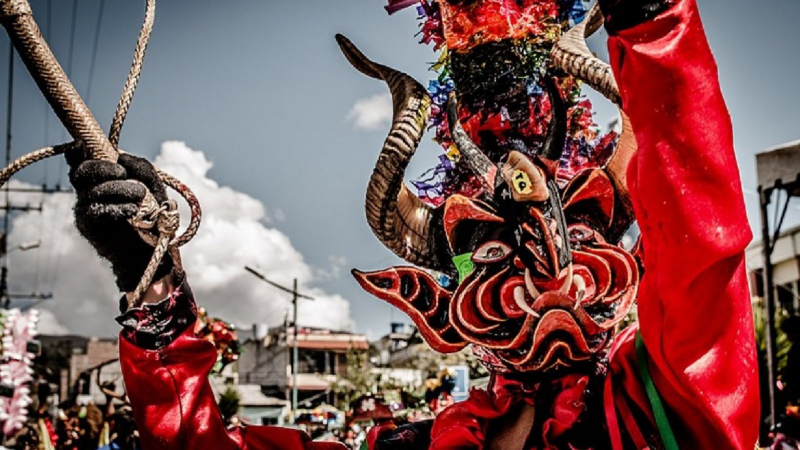
Source: zenithecuador -
The famous festival or series of week-long celebrations in Ecuador known as Fiestas de Quito begins in the capital city of Quito during the last week of November until December 6. It is celebrated to celebrate The city was founded in 1960 and it is carried out with enthusiasm by spirited flamenco shows, bullfighting, opera performances, theatrical performances, exhibitions, games, and lots of activities. other. The Chiva party bus runs through the city, and each neighborhood hosts outdoor music and dance performances, turning Quito into a giant disco! Cuarenta, a typical Ecuadorian card game, was also popular during this time. Head straight to Quito's historic city center, the center of all the action during the festival.
During the days of the Fiestas de Quito festival, locals gather in the streets to enjoy traditional music and hot canelazo, a drink with rum and cinnamon. Parades are carried out in the town, where they all feature their best marching bands.
- Organization time: November to December each year
- Location: Quito, Ecuador
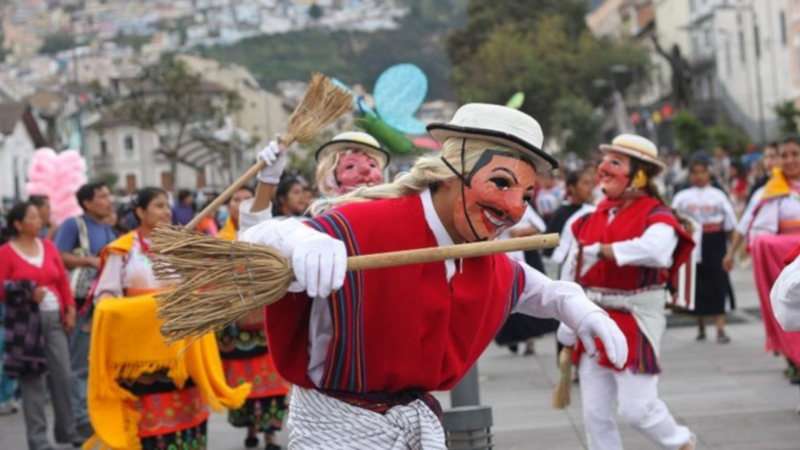
Source: primicias 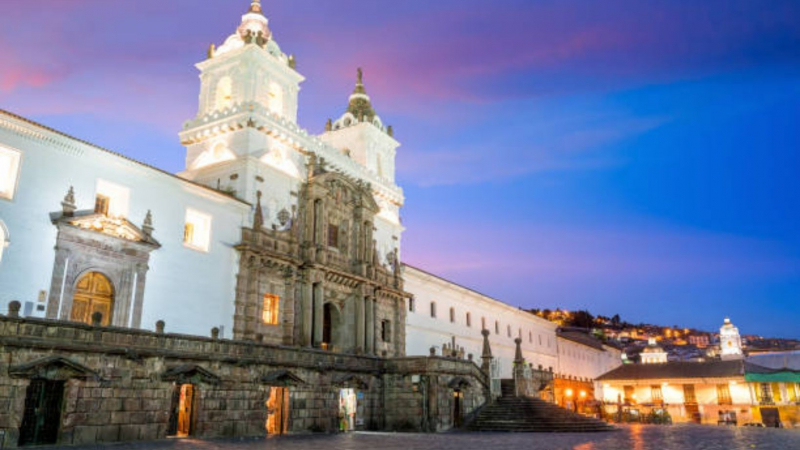
Source: istockphoto -
A popular religious festival, Corpus Christi is a time when Catholics celebrate and honor the body and blood of Jesus Christ. A dazzling fireworks display on the eve of the main festival heralds the start of a long string of fun days. The main day begins with Mass at the church, followed by a procession. Both include folk dancers, performers, and singers, making the atmosphere more like a large religious party than a serious event. Corpus Christi usually takes place on the ninth Thursday after Easter Sunday, so if you're lucky you might be able to attend it alongside the Inti Raymi celebrations in June. Visitors can partake in celebrations anywhere in the country, but those in the towns of Pujilí and Cuenca are the most popular.
Corpus Christi is one of Ecuador's most famous festivals as well as one of the most important folk traditions and has been declared an unseen cultural treasure of Ecuador. The people of Pilaro and surrounding communities gather today to dress up very constructively with important indigenous elements and then dance in celebration in the heart of town. An important element of this celebration is "El Danzante" (the dancer), also known as the rain priest, and it symbolizes the goodness and generosity of the indigenous communities.
- Organization time: June every year
- Location: Ecuador
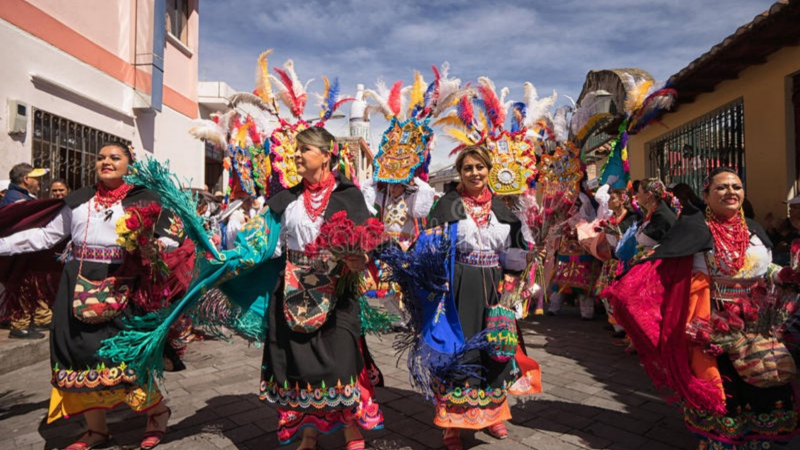
Source: dreamstime 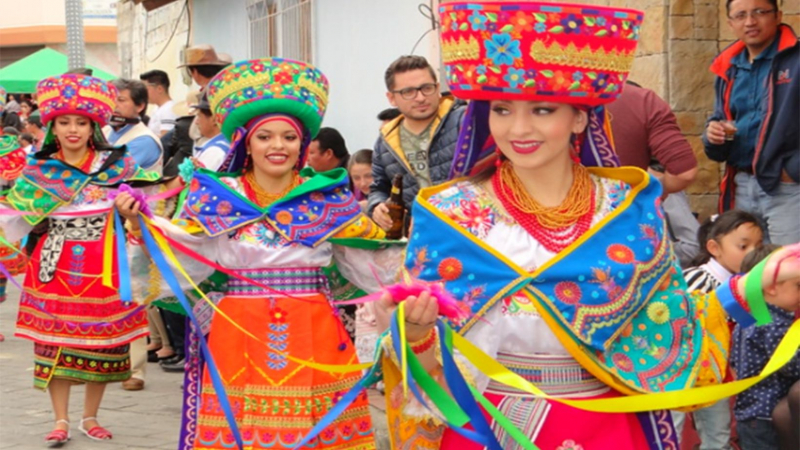
Source: zenithecuador -
Held in the city of Otavalo, the Yamor Festival sees the cultural convergence of people from the Imbabura region, becoming a famous traditional festival in Ecuador. They gather to celebrate and pray to the Virgin Mary of Monserrat and the native goddess Pachamama for the fertility of the soil and bountiful crops. Locals wear traditional costumes and organize lively dance performances, processions, and food fairs that mainly sell traditional food and drinks. Don't forget to try the traditional chicha de yamor (fermented corn drink). Chariot racing, cockfighting, bullfighting, and lake swimming are some of the other highlights of this cultural event in Ecuador. Come to Otavalo during the first two weeks of September to experience the best of religion and culture coming together.
Yamor Festival is a celebration of the multicultural peoples of Otavalo. It blends the celebration of Koya Raymi (rites of the moon and sun as elements of fertility) with Catholic tradition. The word “Yamor” refers to a traditional beverage, brewed with seven varieties of corn and unique to the region. The indigenous groups Kichwa Cayambi and Kichwa Otavalo celebrate the Andean agricultural cycle, paying particular attention to maize, which is considered a symbol of fertility.
- Organization time: September every year
- Location: Otavalo, Ecuador
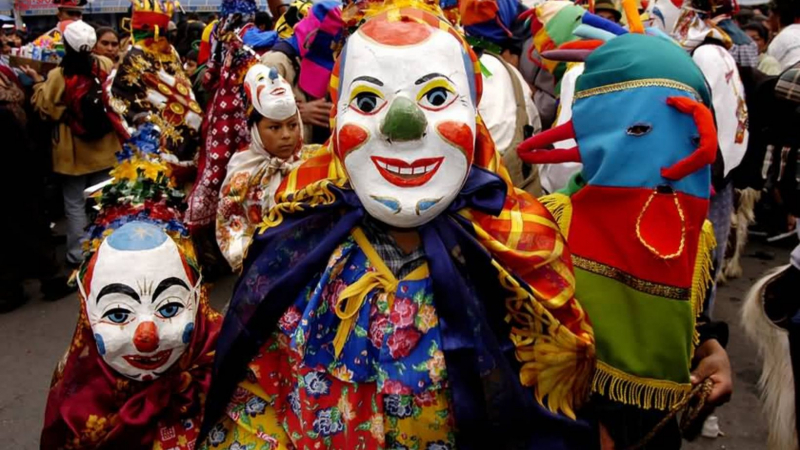
Source: pinterest 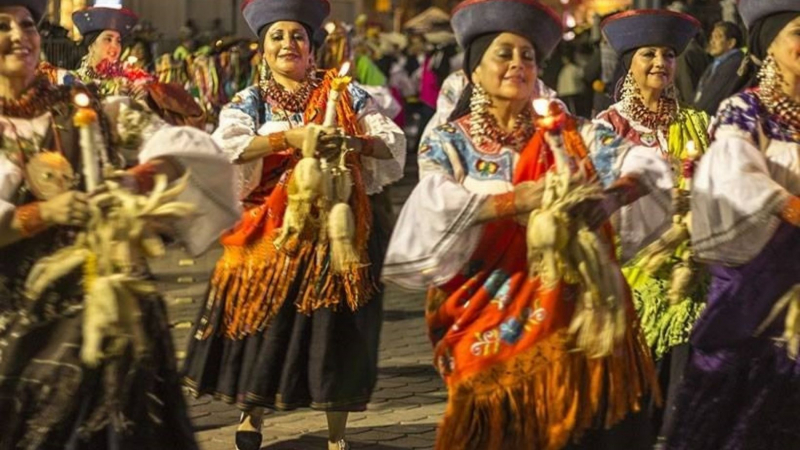
Source: andrewenglish -
On December 31, if visitors are impressed with dancing, drinking, watching fireworks, and partying, then Ecuador has its very own way of celebrating New Year's Day, called Año Viejo. Locals make life-size Año Viejo (old-fashioned dolls) and burn them. These dummies can be any person or human figure they don't like. A handwritten note, explaining the reason behind the dislike, is pinned to the dummies as you burn them. Some really passionate people even stomp on burning piles for effect. However, do not forget to exercise caution. All of this usually happens around 12 a.m. on December 31, followed by dancing and cheering for the new year. Especially, you don't have to be Ecuadorian to burn the effigies, visitors can buy one from the market or even make one of their own and enjoy New Year's celebrations in a completely unique way. This is an impressive point that makes the Año Viejo festival a famous festival in Ecuador.
At the Año Viejo festival, the effigies represent the experiences and events of the past year. The fire symbolizes the beginning of new experiences and better things to come. Las Viudas (The Widows) is an important part of this celebration. Men dressed as women personify the viudas, in mourning for the Año Viejo Puppet.
- Organization time: December 31 every year
- Location: Ecuador
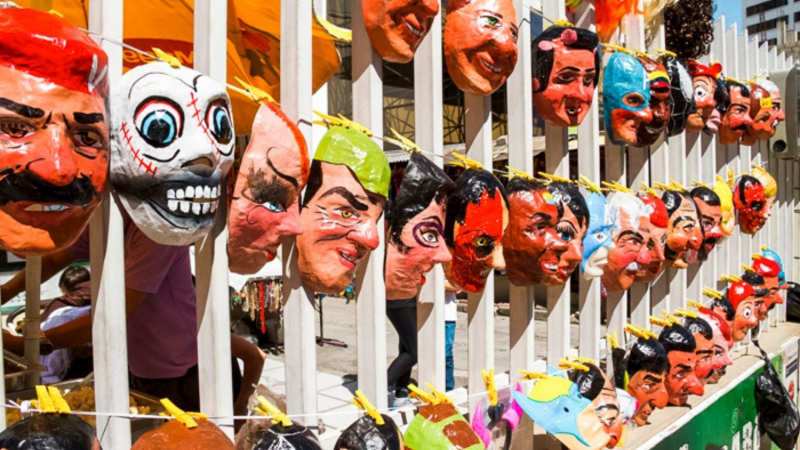
Source: thevikingabroad 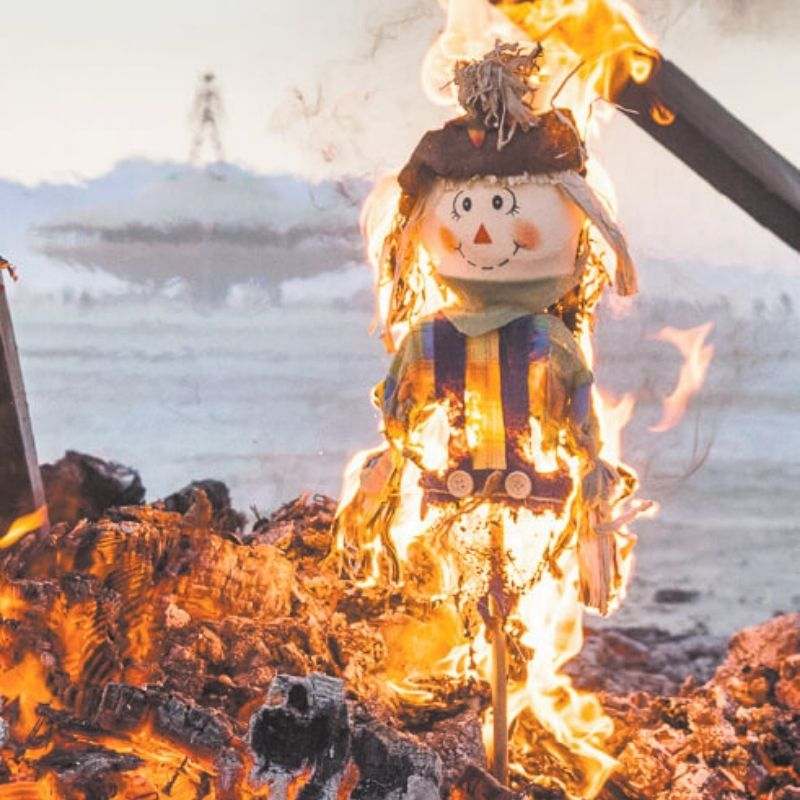
Source: ritiriwaz -
The Ecuadorian town of Latacunga comes to life with the Mama Negra Festival that happens twice a year - once around September 23-24 and once around Latacunga's Independence Day on November 11. While the origins of the Mama Negra Festival are still little known, local knowledge suggests links to an eruption of the Cotopaxi volcano that endangered the lives of African slaves. Later, the Virgin of Mercy was called upon by local residents in the area to show mercy to the slaves, turning it into a religious and cultural festival - a fusion of cultures. indigenous, African and Spanish cultures of Ecuador. Since then, locals have dressed up brightly and taken to the streets to perform, perform and parade wildly. Spectacular fireworks displays at night add a wonderful touch to the vibrant Ecuadorian holiday traditions.
The La Mama Negra festival is a popular festival that attracts visitors as the city's streets fill with a parade of legendary figures passing by, blessing candies and homemade beer. Thousands of locals and tourists gather as traditional spectators through the streets of Latacunga. Musicians, dancers, and bands were all part of this grand theatrical celebration, which ended with the arrival of Mama Negra on horseback.
- Organization time: September & November every year
- Location: Latacunga, Ecuador
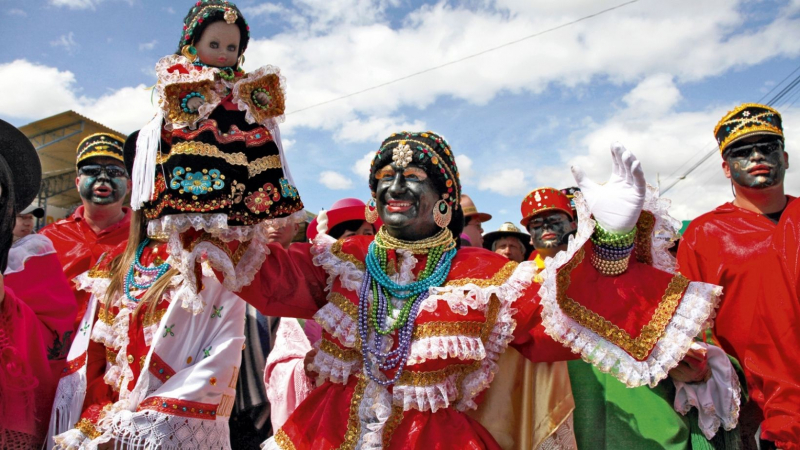
Source: dehouche 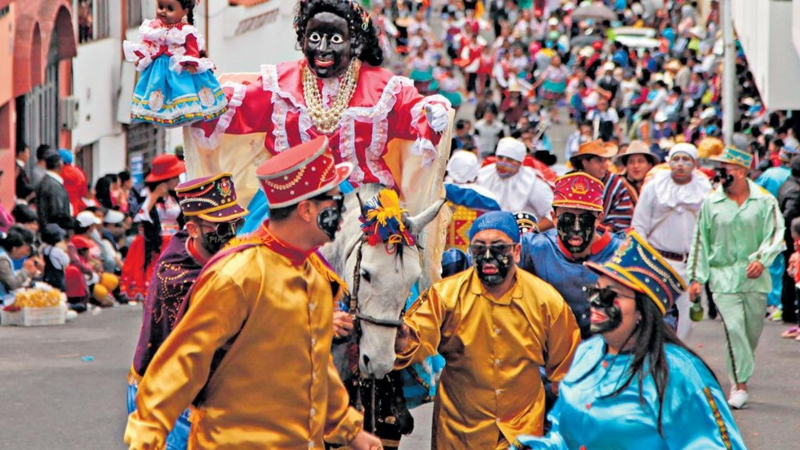
Source: cotopaxi-travel -
Carnival is a popular traditional festival in Ecuador that takes place as the rest of the world during the first weeks of February, and it represents the last chance to have some crazy fun ahead of the religious season. dark religion based on Catholic behavior. Carnival is characterized by now spraying foam on anyone and everyone. A few years ago, people used buckets or water balloons to wet friends or pedestrians passing by for fun (believe it or not). Around many of the country's cities, visitors will find parades and festivals with Ecuadorians celebrating another unique festival.
Carnival dates vary from year to year. The reason is that it is a deeply Catholic tradition. The carnival should take place on Monday and Tuesday, 40 days before Easter each year, before the Catholic fasting period (around mid-February). In Ecuador, the festival incorporates an older indigenous tradition of celebrating the second moon by throwing flowers, water, and flour. It was a period of celebration and abundance before fasting. Although it takes place across the country, Guaranda and Ambato are the main bearers of the tradition. Thanks to this famous festival, Ecuador has attracted a large number of tourists to come here to experience it.
- Organization time: February or March every year
- Location: Ecuador
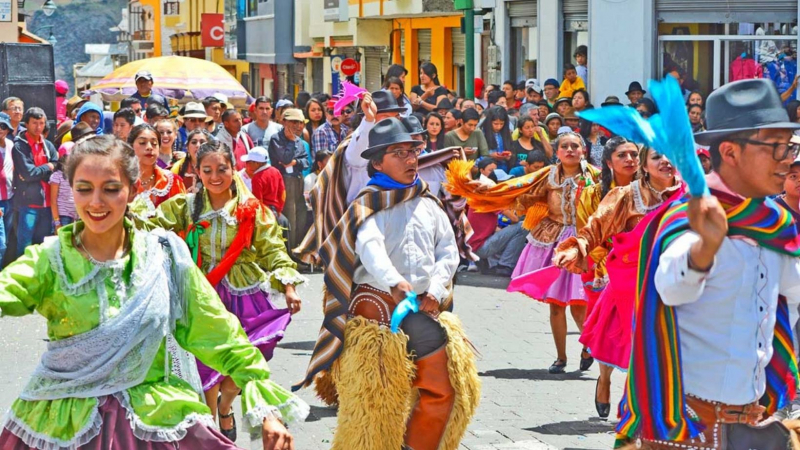
Source: peruforless 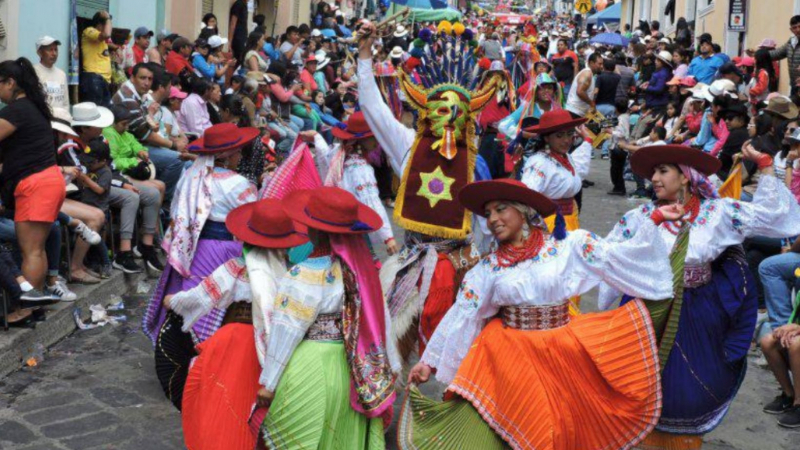
Source: hometohavana -
Held in honor of the Incan sun god Inti, Inti Raymi is a popular and wonderful festival for visitors who want to learn more about the ancient Inca Empire. The town of Cotacachi and surrounding villages come alive with week-long festivals that include street parades, poetry recitations, dance performances, and more. Locals wear black pointed hats and goatskin chaps to enhance the overall traditional feel. Inti Raymi is also a great opportunity to try some traditional foods and drinks like chicha de Jora (corn beer). The festival usually takes place for a week, from June 21 onwards, during the summer solstice. This is perhaps the most famous and important indigenous celebration in Ecuador.
This music can be found throughout the festival, as there are live concerts during the week with local and international artists. Other activities include fireworks, bullfighting (bulls are not killed), and a popular event in which swimmers compete across the waters of Lake San Pablo. A Yamor Festival Queen is crowned and she oversees many festivals during the week. Inti Raymi is a famous festival that presents a colorful and joyful event that symbolizes new beginnings.
- Organization time: June every year
- Location: Cotacachi, Ecuador
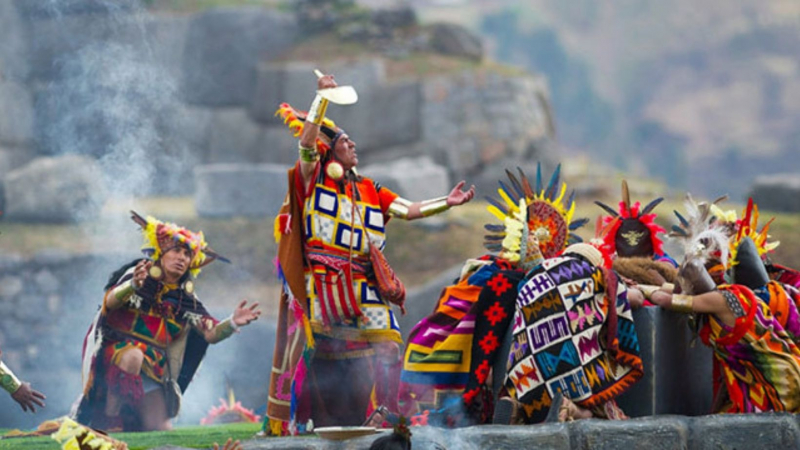
Source: a1luxurytours 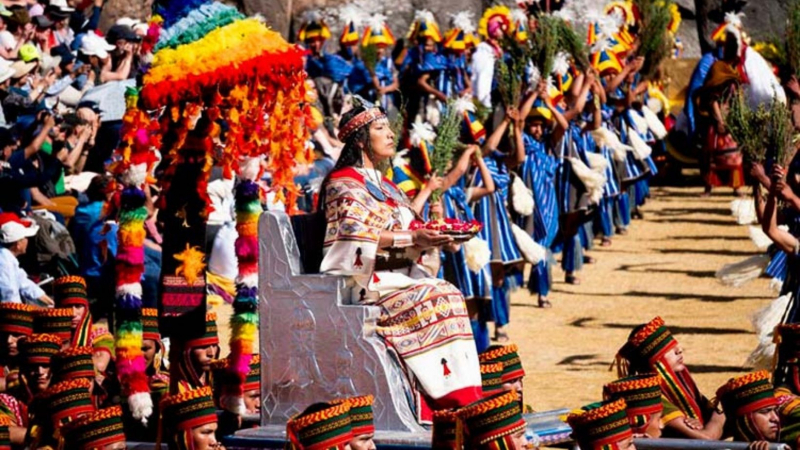
Source: kuodatravel -
Dia de La Raza (Day of the Races), also known as Columbus Day, is a popular festival in recognition of the day Christopher Columbus brought the Spaniards to the area. It doesn't have to be a celebration, although the provinces of Guayas and Los Ríos mark the day with major races featuring male and female riders showcasing their riding prowess. There is also a parade of horses and riders, a beauty contest, dance, and music.
On this day, the locals organize spiritual performances, entertainment shows, and parades that are truly a sight to behold. Día de la Raza is the perfect festival to feel the patriotism and solidarity of Ecuador, so this festival attracts a huge number of visitors to Ecuador.
- Organization time: October every year
- Location: Ecuador
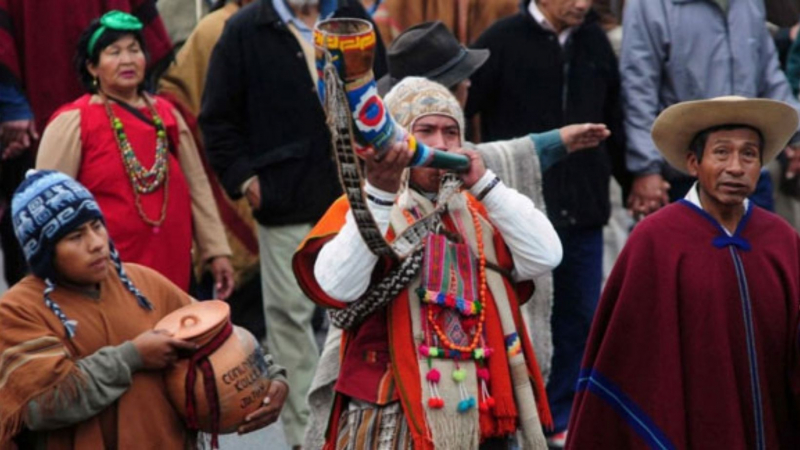
Source: webplus 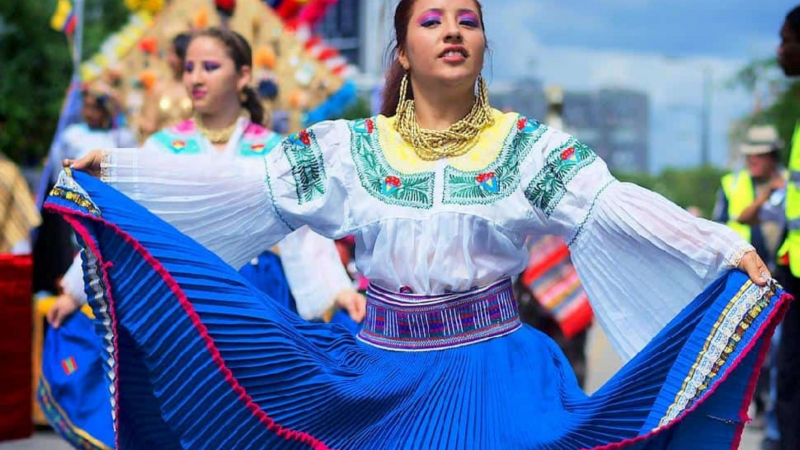
Source: canadiantraveller












